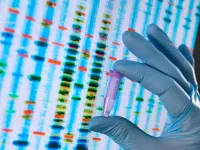
Molecular and microbiological laboratory
The new laboratory provides the opportunity to utilise modern tools and methods, which will assist in a more comprehensive understanding of the biology of organisms and the environment in the aquarium
Maintaining the health of organisms
Molecular analysis of samples taken from aquarium organisms and the environment, such as water and sediment, identifies micro-organisms that could potentially threaten the health of aquarium inhabitants. This analysis allows early diagnosis of disease, and therefore treatment and prevention of disease spread within the system. |
Monitoring genetic diversity
Nucleic acid analysis allows us to monitor genetic diversity within and between populations of organisms, both in our systems and in the sea. This is useful, for example, for the conservation of endangered species or for maintaining the genetic diversity of individuals bred for repopulation purposes. |
Breeding and reproduction research
It facilitates the optimisation of breeding programmes to improve reproductive success or offspring quality through the selection of desirable traits.
Species identification
When organisms are exchanged, aquaria sometimes receive individuals that have not been accurately identified to lower taxonomic levels (genus and species) or have been misidentified. The molecular biology laboratory uses DNA analysis to enable more precise species identification compared to morphology.
Monitoring the effects of environmental change
Using modern molecular biology methods, it is possible to correlate changes in physical and chemical parameters (e.g. pH, temperature, oxygen concentration and other important elements) with changes in gene expression of micro- and macro-organisms or with changes in the composition of micro-organisms that make up the biological community of the aquarium. This allows the laboratory to monitor changes in the overall environment qualitatively and quantitatively under controlled conditions.































